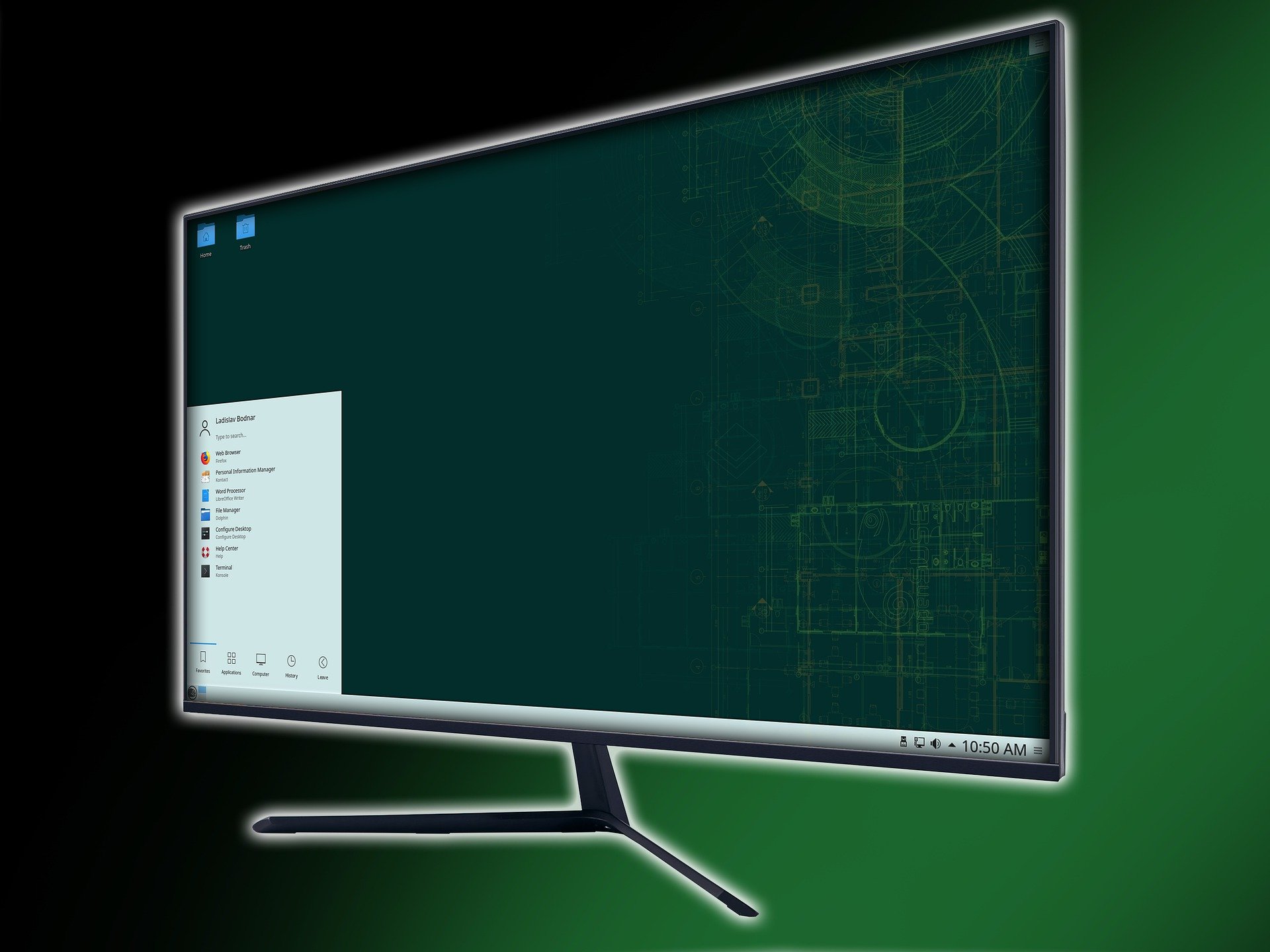Contents
As the Linux kernel matures, Linux distros have become a viable choice for daily use by most people. Hardware support is superb these days and software has become more polished while also becoming more powerful. For most users, there aren’t any roadblocks remaining. Linux now allows you to do virtually anything you can do on Windows or Mac.
However, heavier Linux desktop environments can put a strain on older hardware. An SSD and a RAM upgrade can help if you have an older machine but sometimes you’ll need a lightweight distribution if you want to use a less powerful computer.
As a confessed distro-hopper and a fan of all things Linux, I’ve used the more common distro choices and many of the less common ones as well. The Linux community has brought us some great tools over the years and I’m grateful for their contributions. Below are some of my favorite lightweight Linux distros. To be fair, some may fall into the mid-weight category but I wanted to include full-featured desktops.
Expect all to run in less than ~600 MB at boot, with some needing much less RAM to run.
Ubuntu Mate
First, a caveat. The Mate desktop might do some weird things if you have a backlit keyboard. On my ThinkPad T-Series, the keyboard lights up on login and when resuming from sleep. I won’t pretend to know of that’s a feature or a bug, but I wasn’t able to disable the feature, if that’s what it is.
Mysterious lights aside, Ubuntu Mate proved to be a solid choice and easy to use. You can pull software from Ubuntu’s repositories and — because you’re running Ubuntu — you’ll also find some of the best app support in the Linux universe. Developers often package apps for Ubuntu whereas with other distros you may have to build certain apps from source. In other cases, some apps may not be available at all.
Ubuntu Mate also offers a Software Boutique, which makes finding software easier for new users. Old-school Debian or Ubuntu users might prefer to use Synaptic for GUI package management.
Expect Ubuntu Mate to use about 600 MB at boot up, which is suitable for a computer with 3-4GB of RAM. Generally, Ubuntu Mate is easy to configure and snappy even on humble hardware. If you have less than 3GB of RAM or want something lighter, read on.
Kubuntu, based on the KDE Plasma desktop with Ubuntu’s base, is another solid choice from the Ubuntu family. For an even lighter option, you can also consider Lubuntu, based on the Openbox window manager.
Ubuntu Mate minimum requirements
- 32-bit or 64-bit CPU
- 1GB RAM
BunsenLabs
Quirky and minimalistic, BunsenLabs is the spiritual successor to CrunchBang Linux, a popular, lightweight distro that’s no longer developed.
Rather than a full (and heavier) desktop, BunsenLabs uses the Openbox window manager combined with a lightweight panel to give users access to all the tools they expect. Consider adding an app launcher like Synapse to make finding apps easier. With no add-ons, BunsenLabs can load in under 200MB of RAM. Many users have been able to get the desktop to under 100MB.
Because BunsenLabs is based on Debian stable, the OS is rock solid. Some apps are a bit older but the apps we often use most, browsers and email clients, are kept more current with an eye on security updates. For Debian-based distros, part of the attraction is that the software doesn’t change often. While this means you may not have the latest version, it also means your software probably won’t break because of updates.
BunsenLabs minimum requirements
- 32-bit or 64-bit CPU
- 256MB RAM
Manjaro XFCE or KDE
Over the past 8 years, Manjaro Linux has become one of the most popular Linux Distros. Manjaro is based on Arch Linux but you’ll get package releases a bit slower than with Arch. This isn’t always a bad thing because updates on a rolling release can occasionally break the installation or impair certain functionality. A slow wait to be sure all is well can reduce potential problems.
Manjaro also adds their own customizations to desktop environments, which makes the desktop more attractive in many cases. Included software favors well-known and trusted open-source titles.
Both XFCE and KDE Plasma offer a wealth of settings, so fiddlers will have plenty to fiddle with. However, the stock settings are sensible enough that many people can get right to work without making many adjustments.
Software support is excellent with Manjaro. In addition to the Manjaro repositories, you can also pull apps from the Arch User Repository. To date, I’ve only encountered one app I use that I couldn’t find for Manjaro. Fortunately, I found another app that did the job perfectly.
Both XFCE and KDE use about 400-450 MB of RAM on startup, leaving plenty of breathing room for apps.
Manjaro XFCE or KDE minimum requirements
- 64-bit CPU
- 1GB RAM
KDE Neon
I’ve mentioned KDE Plasma a few times already, and that’s because the KDE team has done a stellar job of building a desktop environment that’s full-featured and easy on resources. It looks great too.
KDE Neon uses Ubuntu’s long-term service release as its base while bringing you the latest KDE Plasma desktop and KDE apps. Your mileage may vary with KDE apps, however. For example, the email client, Kmail, can be finicky. If you prefer, Thunderbird is also available and does the job well.
Neon’s base install is lean, leaving the user to choose the apps they need after the OS is installed. Apps are available for Neon as Snaps or Flatpaks, both of which offer a containerized way to install the latest apps. Of course, you can also install apps from Ubuntu’s repositories or through a vast network of PPA sources.
At startup, KDE Neon should only use about 400-450 MB of RAM. You’ll find useful extras installed automatically, like browser integration, KDEConnect for smartphone connectivity, and encrypted vaults for secure file storage.
KDE Neon minimum requirements
- 64-bit CPU
- 2GB RAM
Solus Mate
Solus, while newer than some other names on the list, has already become a respected distro and yes, they offer a lightweight desktop. The Mate desktop coupled with Solus’s curated rolling release model has proven rock solid and lightweight.
Curated, in this case, means you won’t find an endless choice of apps with Solus. However, the team has done an excellent job of making the most popular apps available. This includes a number of 3rd party apps, like Google Chrome, Slack, and more. Of course, you can also install Flatpaks or Appimages if you need an app that isn’t in the Solus repositories. More experienced users can also install open-source apps from source.
Rolling releases have a sometimes-unfair reputation for breaking things. While Solus makes no promises, many users (including this author) have found Solus to be reliable as a daily driver and its performance to be impressively fast.
For the KDE Plasma fans out there, Solus also has a KDE spin in beta testing. In my experience, it’s as good as any other KDE distro while also offering Solus’s solid core and intelligent selection of apps.
Solus Mate minimum requirements
- 64-bit CPU
- 2GB RAM
Also worth a spin: Fedora KDE & OpenSUSE KDE
As a Linux user who can’t bring himself to get rid of old hardware, I’ve researched lightweight distros several times before. Often, XFCE desktops make the list along with lesser-known desktops or window managers like Enlightenment and Openbox. KDE is seldom mentioned, especially in the older articles.
However, times have changed and KDE is now a lightweight desktop on par with XFCE in regard to RAM usage. It’s also one of the most configurable desktops you could ever want. Oh, and it looks great too.
Both Fedora and OpenSUSE have excellent spins that include KDE as a desktop environment. Both distributions also offer a massive selection of apps as well as support for Flatpaks.
Fedora uses a stable release cycle but also offers frequent updates to keep your apps and OS current.
OpenSUSE offers a stable version that’s on par with Debian for stability. It’s about as solid as it gets for lightweight distros. However, you can also choose OpenSUSE Tumbleweed, a rolling release with an innovative testing process that helps stability, while still keeping your system up to date with the latest packages.
Both Fedora and openSUSE support 64-bit CPUs and require 1GB of RAM as a minimum. Unlike the other lightweight Linux options on the list, Fedora and openSUSE require some extra steps to install codecs for multimedia.
You can find the distros here:
openSUSE Tumbleweed KDE download (rolling release)



